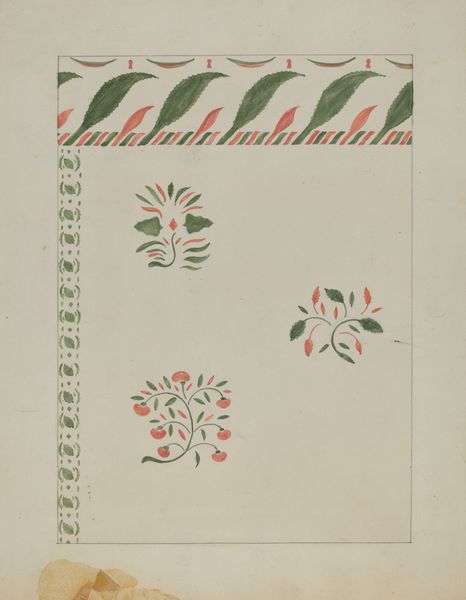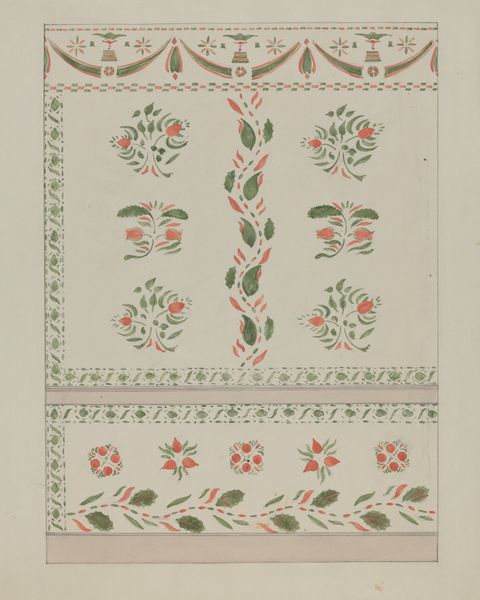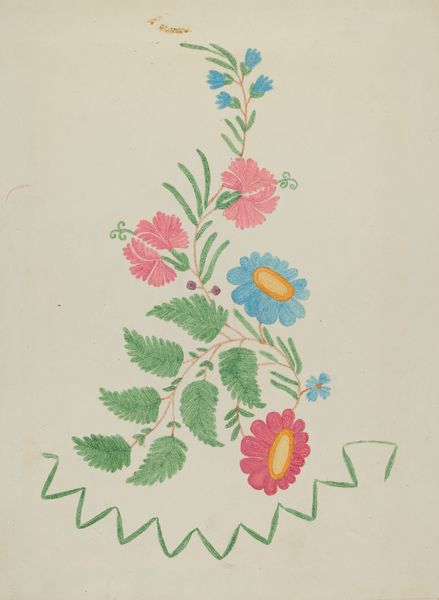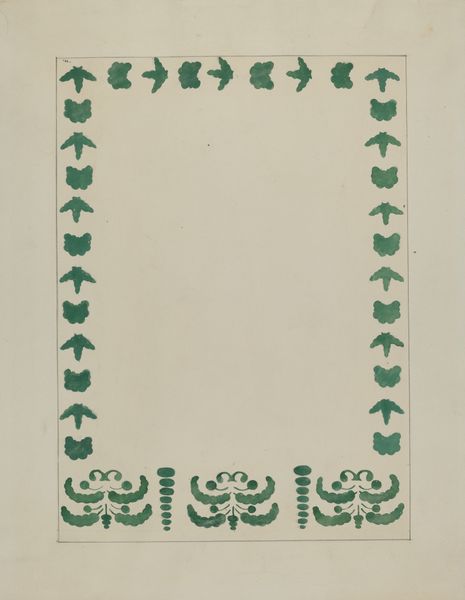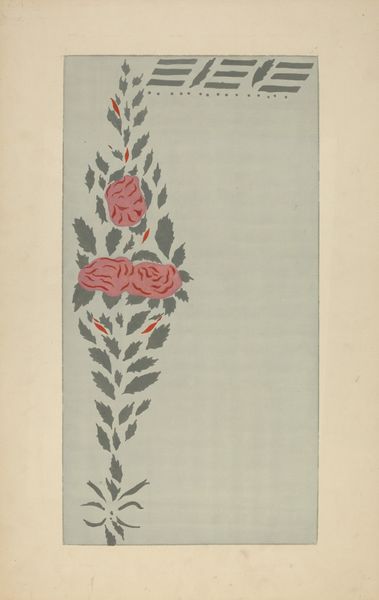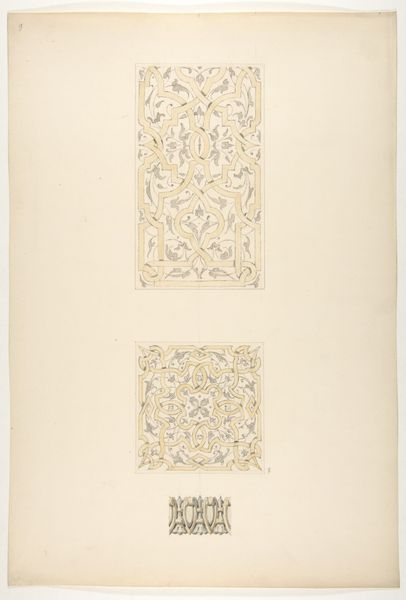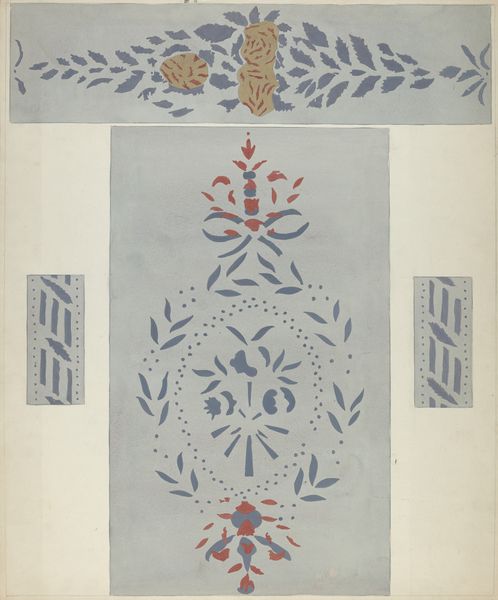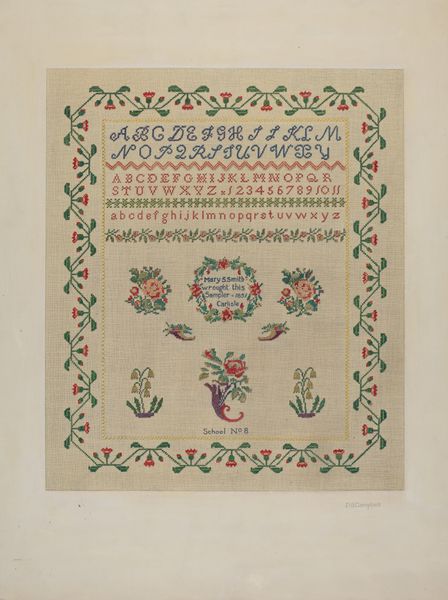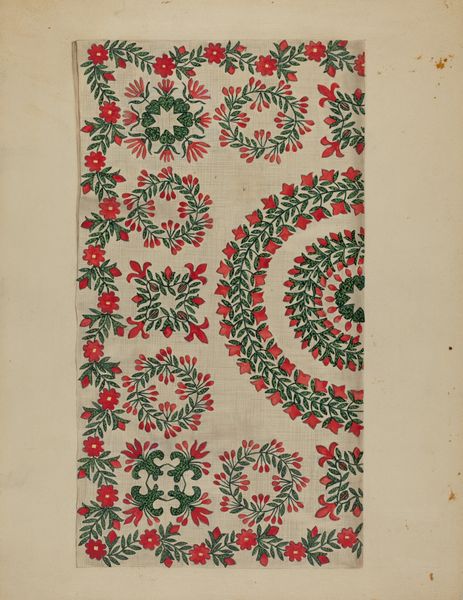
drawing, paper, ink
#
drawing
#
ink paper printed
#
paper
#
ink
#
textile design
Dimensions: overall: 35.4 x 27.6 cm (13 15/16 x 10 7/8 in.)
Copyright: National Gallery of Art: CC0 1.0
Editor: This is Ray Holden’s "Stencilled Wall" from around 1936, ink on paper, seemingly a textile design. The hand-crafted repetition is soothing, but also makes me think about industrial printing and the labor involved. What do you see in this piece? Curator: I'm drawn to the inherent tension in the design. We have this decorative surface, probably intended for mass production as a textile or wallpaper, yet executed by hand in ink on paper. That act of making by hand emphasizes the human labor usually obscured by mechanized reproduction. Editor: That’s a good point! How does its historical context play a role? Curator: Considering it was created around 1936, during the Depression era, it’s fascinating to consider the economic conditions impacting both production and consumption. Was this design conceived with affordable mass production in mind for a struggling population? Or does the handmade quality suggest a critique of industrial manufacturing and its effect on traditional crafts? Editor: It almost feels like a commentary on the evolving role of craft within industrial design. How do you read the motifs and visual composition of the stencils in light of the design’s materiality? Curator: Well, stenciling as a technique allows for repeated patterns with minimal resources, and maybe it’s a nod to folk art traditions—democratizing access to beauty in the domestic sphere through readily available materials. But in the age of mechanization, the material presence, those little imperfections of the stencil, are powerful reminders of manual process, embedded social messages and aesthetic intention. Editor: This has totally changed the way I think about it. I initially saw it as just a decorative design. Now I see its reflection on labor and value! Curator: Precisely! Shifting our focus from just aesthetics to material history can reveal a piece’s connection to broader socioeconomic forces.
Comments
No comments
Be the first to comment and join the conversation on the ultimate creative platform.
